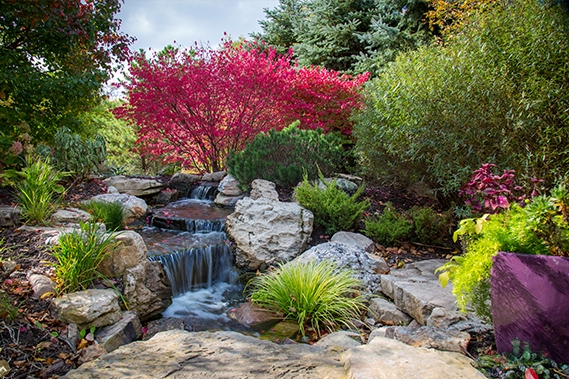Meyer Aquascape Maintenance 101: Keeping Your Water Garden Pristine and Healthy
Meyer Aquascapes has transformed ordinary outdoor spaces into breathtaking aquatic oases for years. The key to preserving the beauty and health of these ponds and water gardens lies in regular and effective maintenance. Proper upkeep ensures the longevity of your aquatic paradise and provides a harmonious environment for the flora and fauna within. This comprehensive blog post will explore essential aquascape maintenance practices, tips, and expert advice to help you keep your pond and water garden pristine and healthy throughout the seasons.
Understanding the Importance of Aquascape Maintenance
Your pond or water garden is a living ecosystem; like any ecosystem, it requires careful attention to thrive. Neglecting maintenance can lead to imbalances, poor water quality, and the proliferation of unwanted algae and aquatic weeds. Regular maintenance plays a vital role in preventing issues, promoting biodiversity, and maintaining the beauty of your aquascape.
Seasonal Maintenance Guide
a. Spring:
- Pond Inspection: As winter ends, inspect your pond for any damage or debris. Check pumps, filters, and other equipment for proper functioning.
- Water Quality Testing: Test the water quality for pH, ammonia, nitrites, and nitrates. Make adjustments as needed to ensure a healthy environment for fish and plants.
- Algae Control: Remove excess algae and clean the pond walls and rocks to prevent overgrowth.
- Plant Care: Prune and thin out aquatic plants to encourage healthy growth.
b. Summer:
- Water Level: Monitor water levels regularly, especially during hot weather, and top up as necessary to compensate for evaporation.
- Fish Feeding: Feed fish sparingly and only what they can consume in a few minutes to prevent overfeeding and water pollution.
- Oxygenation: Ensure proper oxygenation by maintaining aeration systems and preventing excessive algae growth that can deplete oxygen levels.
c. Fall:
- Leaf Management: Use netting to prevent leaves from falling into the pond and decomposing, which can affect water quality.
- Plant Pruning: Trim back aquatic plants and remove any decaying vegetation to minimize debris in the pond during winter.
- Fish Care: Prepare fish for the colder months by feeding them nutrient-rich food to help them build up reserves for hibernation.
d. Winter:
- Pond De-Icer: Install a de-icer or floating heater to prevent the pond from completely freezing over. This allows for gas exchange and helps maintain oxygen levels for fish.
- Fish Feeding: Stop feeding fish once the water temperature drops below 50°F (10°C) to prevent digestive issues.
Pond Water Quality Management
a. Filtration System: A robust filtration system is essential for maintaining crystal-clear water and removing debris, excess nutrients, and harmful substances. Regularly clean and maintain your filter to ensure it operates at peak efficiency.
b. Beneficial Bacteria: Introduce beneficial bacteria to your pond to break down organic waste, reducing ammonia and nitrate levels. These bacteria enhance the pond’s natural biological processes and improve water quality.
c. UV Sterilizers: Consider using a UV sterilizer to control algae blooms and prevent the proliferation of harmful microorganisms. UV light can neutralize algae and pathogens, enhancing water clarity.
d. Water Changes: Perform periodic water changes, especially if you notice poor water quality or excessive nutrient buildup. Replacing a portion of the water with fresh, dechlorinated water can help restore balance.
-
Aquatic Plant Care
a. Plant Selection: Choose a variety of aquatic plants to create a balanced ecosystem. Include oxygenating plants to enhance water quality and floating plants to provide shade and shelter for fish.
b. Pruning and Thinning: Regularly prune and thin out overgrown plants to prevent them from dominating the pond. This practice also encourages new growth and maintains a pleasing aesthetic.
c. Fertilization: If your pond contains potted plants, use aquatic plant fertilizers sparingly to avoid excessive nutrient buildup that can lead to algae problems.
-
Fish and Wildlife Management
a. Fish Population Control: Ensure that the number of fish in your pond is appropriate for its size and ecosystem. Overcrowding can lead to poor water quality and stress on fish.
b. Predator Protection: Install protective measures, such as nets or floating islands, to deter predators and prevent them from preying on fish and other aquatic wildlife.
c. Wildlife Encounters: Create a balance between wildlife and fish by providing hiding spots for fish and using decoys to deter predatory birds.
-
Dealing with Algae and Aquatic Weeds
a. Manual Removal: Regularly remove algae and aquatic weeds by hand or using specialized tools like algae brushes and pond rakes.
b. Biological Control: Introduce natural algae-eating organisms like snails, tadpoles, and some fish species to help control algae growth.
c. Chemical Treatments: Use algaecides and herbicides as a last resort and with caution. Always follow manufacturer guidelines and be mindful of the impact on other pond inhabitants.
-
Maintaining Pond Equipment
a. Pumps and Filters: Clean and inspect pumps and filters regularly to ensure they function optimally. Replace worn-out parts promptly.
b. Lighting: Check and replace pond lighting as needed. Proper lighting enhances the nighttime appeal of your aquascape.
c. Aeration Systems: Inspect and clean aeration systems to ensure proper oxygenation of the water.
Meyer Aquascape maintenance is a labor of love that rewards you with a stunning and thriving aquatic paradise. Following a comprehensive maintenance routine and employing expert tips ensures your pond and water garden remain pristine and healthy throughout the seasons. Remember, each pond is unique, so observe and adjust your maintenance practices based on the specific needs of your aquascape. Embrace the journey, and enjoy the tranquil beauty of your aquatic sanctuary for years to come.
Check out our store for all your water gardening needs! Aquascape products are Aquascape Inc. Certified.
Thanks for reading at Meyer Aquascapes! We hope you’ve enjoyed our post on garden pond design. Please leave a comment below if you liked it or have any questions. We’d love to hear from you! Thanks for stopping by!


 Meyer Aquascapes
Meyer Aquascapes Meyer Aquascape
Meyer Aquascape